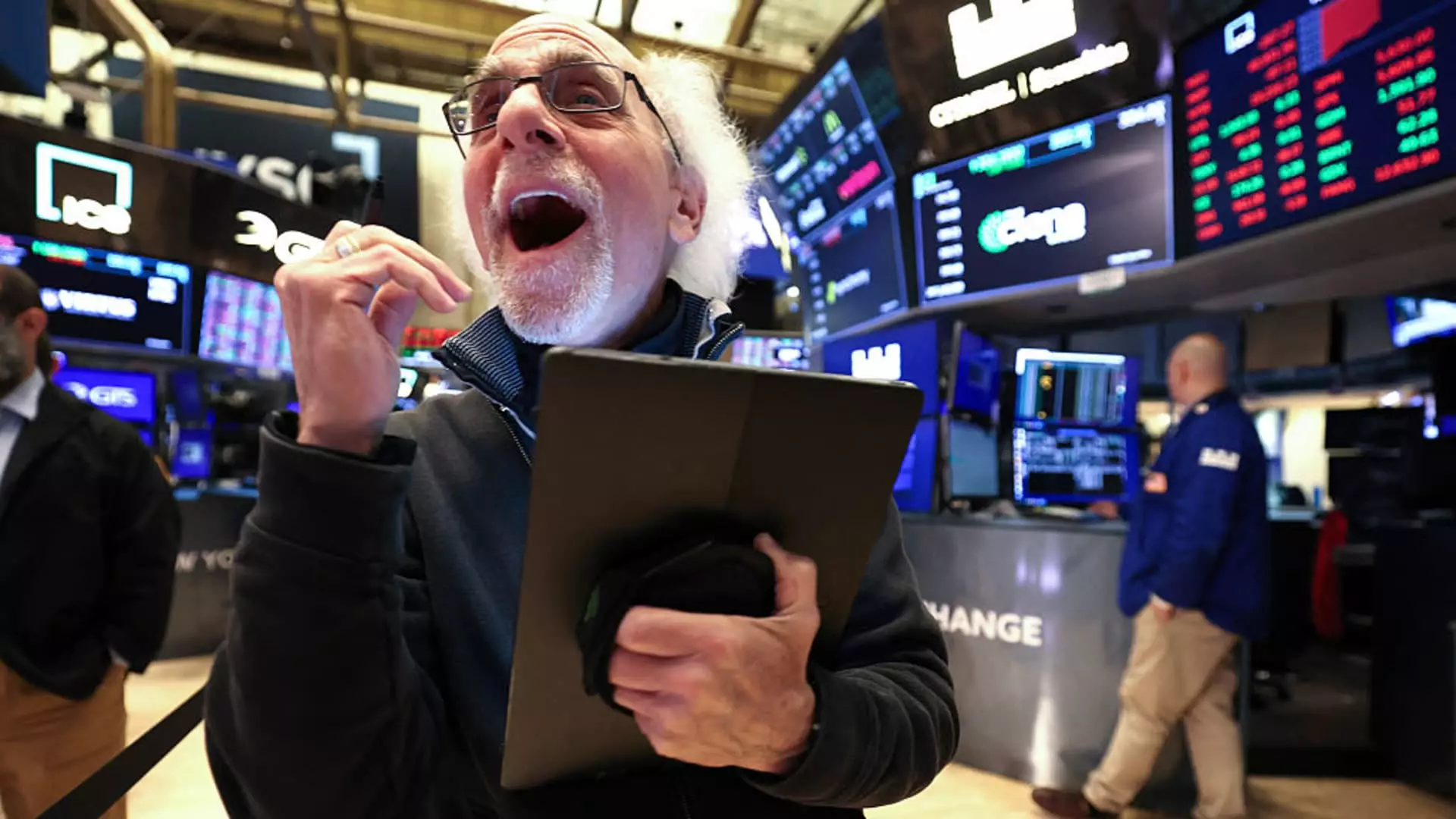When the S&P 500 and Nasdaq hit new all-time highs recently, it appeared the U.S. stock market was riding a wave of unrestrained optimism. The S&P 500 surged above 6,180 and Nasdaq beyond 20,300, marking about a 4% gain in just one week—no small feat considering the volatile backdrop. Yet beneath this dazzling surface lies a conflicted narrative that deserves a more skeptical examination. Markets are clawing their way back from the sharp selloff triggered by protectionist trade policies and uncertainty surrounding monetary direction and geopolitical tensions. To call this rally “remarkable” might ignore the inherent risks still lurking in the corners, risks too easily drowned in the euphoric roar of record highs.
Artificial Intelligence: The Double-Edged Sword of Growth Hype
Much of the market’s newfound vigor is linked to the so-called “generative artificial intelligence trade,” with chipmakers like Nvidia and Broadcom posting eye-popping valuations and gains. Nvidia alone, having soared to a market cap reportedly surpassing $3.8 trillion, embodies the market’s unshakable faith in AI’s growth prospects. Even deals like Nvidia’s recent pact to supply AI chips to Saudi Arabia are lauded as signs of global demand surging forward.
However, this AI-driven bull run also exemplifies the precarious nature of speculative excitement. Investors seem to have waved away the challenges posed by increasing U.S.-China tensions, the threat of supply chain disruptions, and emerging export controls designed to throttle semiconductor access. This complacency suggests a dangerous underestimation of geopolitical fault lines that could quickly chill AI enthusiasm. If supply bottlenecks tighten or international cooperation breaks down further, the stock prices of these AI leaders could rapidly deflate. The market’s current “all-in” AI gamble may be less the result of pure innovation confidence and more about trying to recapture a growth narrative after months of anxiety and losses.
Defense and Cybersecurity: Seeking Safe Havens or Overvalued Bets?
The pivot to defense stocks amid escalating Middle East conflicts and fears of cyber warfare reflects a broader market trend toward “safe havens.” Cybersecurity giants like CrowdStrike have surged to new highs, riding a wave of investor demand for companies seen as stalwarts in an uncertain world. Similarly, traditional defense contractors now command considerable attention.
While turning toward defensive sectors in turbulent times is logical, the bullishness toward these stocks risks inflating valuations beyond their fundamental worth. Cybersecurity, for all its critical importance, remains highly competitive with rapid technological evolution. Investors betting too heavily on a narrow group of defense and security names may find themselves exposed to shocks from technological disruption or geopolitical developments that do not translate into expected contracts or revenue growth. There is a fine line between strategic safety and complacent overvaluation, and the market appears dangerously close to blurring it.
Economic Resilience or Illusion? The Fed’s Tightrope Walk
Federal Reserve Chair Jerome Powell’s portrayal of the economy as “still solid” and positioning the Fed as willing to wait before cutting interest rates has bolstered investor confidence. Companies like Goldman Sachs and Capital One have ridden this wave of optimism, benefiting from an uptick in investment banking activity and steady consumer spending.
Nevertheless, describing the economy as “solid” glosses over persistent, underlying vulnerabilities. Inflationary pressures remain, global uncertainties loom large, and the labor market, while strong in headline numbers, may mask structural weaknesses. The Fed’s cautious approach, commendable in its prudence, may also delay action until financial vulnerabilities deepen. Banking on a “stable” economic environment to sustain equity gains—especially those built on leveraged financial services and consumer credit—could prove costly if any of these fault lines give way. Furthermore, the recent wave of mergers and acquisitions, such as Capital One’s $35 billion acquisition of Discover, while impressive, also signals industry concentration and systemic risks not immediately apparent in stock price surges.
Wall Street’s Relentless Optimism: Confidence or Hubris?
The CNBC Investing Club’s glowing coverage exemplifies a broader Wall Street tendency to frame market rallies as unequivocally positive, sometimes bordering on cheerleading. While enthusiasm is necessary to fuel investment and economic growth, there is a dangerous tendency in financial media and investment advisories to overlook or minimize risks. Celebrating seven Club holdings hitting “all-time highs” glosses over the high degree of concentration in tech, defense, and financial stocks driving the gains, reflecting an uneven recovery rather than broad-based strength.
Moreover, Jim Cramer’s calls to keep buying Capital One despite “discount” valuations relative to competitors reveal the fragility of this optimism. Discounted relative to whom, and under what assumptions of future growth or risk? Such recommendations may expose retail investors to undue downside if assumptions about economic resilience falter.
The recent market rally, therefore, feels less like a robust, dependable advance and more like a fragile, sentiment-driven surge—a collective holding of breath against mounting challenges. The shiny numbers obscure the underlying volatility: geopolitical strife, trade tensions, monetary uncertainty, and concentrated speculative fervor.
What the record highs really suggest is that investors have hopped onto a speeding train, dazzled by flashes of AI innovation and defensive buying, but with limited visibility of the sharp bends ahead. This is a moment for cautious reflection rather than unguarded exuberance—where vigilance must balance optimism, and risk management must rival the allure of new records.

